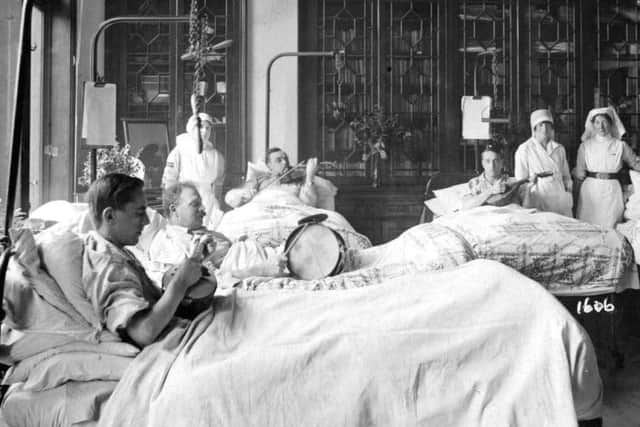Armistice 100. Medics pushed boundaries to help injured
But the dramatic escalation of the brutality of warfare – and the often nightmarish injuries that came with it – drew a heroic response from the medical profession and led to advances in care that are still benefiting injured and sick people today.
The heavy artillery fire obliterated bone and flesh. If soldiers were lucky enough to survive their initial injuries, the looming threat of the dirt of the trenches would be their next enemy.
Advertisement
Hide AdAdvertisement
Hide AdThe arduous journey from the trenches back to the shores of Blighty were fraught with the perils of staving off the threat of infection.


When medics were faced with the brutality of soldiers’ injuries, they pushed new boundaries, bringing about advances in treatments. Surgeon Harold Gillies developed a new method of facial reconstructive surgery in 1917.
Blood transfusions, amputations, control of infection, the creation of artificial limbs and pioneering surgery ensured that many more men were likely to survive their injuries.
But it wasn’t just the physical scars that left their mark on the hundreds of thousands of men who answered the call to serve their country. The mental scars were just as severe.
Advertisement
Hide AdAdvertisement
Hide AdMen may have survived the hail fire of shrapnel but were likely to succumb to the impact of a neuropsychiatric syndrome known by various names, but most commonly as “shell shock”.
First described by a British physician, Charles Myers, it would often leave men barely able to walk, unable to talk and suffer from uncontrollable trembling.
The road back to recovery for many of those men would be lengthy as they were taken away from the misery of the Western Front.
Estates across the country were transformed into makeshift convalescent homes to ensure that the injured soldiers were able to recuperate from their injuries.
Advertisement
Hide AdAdvertisement
Hide AdIn Leeds, Beckett Park Hospital became known as a specialist centre for facial surgery, reconstructing soldiers’ faces disfigured by shrapnel and bullet wounds.
The teacher training college, which was built in 1913, was turned into a military hospital called the 2nd Northern General Hospital.
At its peak the hospital had 3,200 beds and by the time the war finished more than 57,000 patients had been admitted with just 226 reported deaths.
Among those to visit the wounded troops were King George V who paid tribute to the bravery of those who placed themselves in the firing line in the trenches.
Advertisement
Hide AdAdvertisement
Hide AdHistoric homes such as Temple Newsam, also in Leeds, were also transformed into convalescent hospitals to help support soldiers as part of their recovery.
This type of hospital was used in the last stage of the recovery process for wounded soldiers.
Volunteer nurses showed remarkable dedication and compassion to those they cared for in the makeshift wards.
Medicine was forced to develop quickly during the war and it is through those advances that British medical professionals have continued to remain at the forefront of technology.